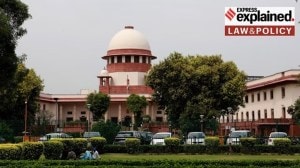Finland, ranked the world’s happiest country, held elections on Sunday, April 14. In a country whose 5.5 million population includes about 300,000 immigrants, immigration emerged the dominant, most politically divisive issue in the elections.
What are the takeaways for the rest of the world, including India, which ranks 140 out of 156 countries in this year’s World Happiness Report released by the Sustainable Development Solutions Network for the United Nations?

Big 3 down
Elections to the 200-member Parliament, called Eduskunta, saw a turnout of 72%, the highest since 1991. The centre-left Social Democratic Party (SDP), which has strong links to trade unions, won 40 seats. The right-wing, anti-immigration Finns Party, got 39. The centre-right, economically liberal National Coalition got 38 seats. The incumbent Centre Party, which has liberal and traditionalist wings, managed merely 31 (down by 18 seats).
The number of women MPs elected, at 92, is the highest ever.
The combined 109 of the big three (SDP, National Coalition and Centre) is an all-time low. Professor Markku Jokisipilä, who led the Parliamentary Research Unit at the University of Turku, said this election marks the “end of the era of big parties”. Between 1983 and 2011, the big three used to get two-thirds of the votes and 135-145 seats with 20-25% of the votes and 45-60 seats each.
The rise of the Finns Party broke this pattern. The big three got 55.2% and 121 seats in 2011, 55.8% and 120 in 2015, and 48.5% and 109 now.
This is the first time since 1999 that the SDP is the biggest party, and Antti Rinne is expected to become Prime Minister. However, the SDP’s 40 seats and 17.7% votes are smaller than ever before. Compared to PM Paavo Lipponen in the 1990s, when the SDP got 28.3% votes and 63 seats, Rinne will be considerably weaker.
Story continues below this ad
The incumbent PM’s Centre Party paid a high price for its four years in power even though employment went up and the economy fared well. Its 31 seats is the lowest since Finnish independence.
Rise of the right
In June 2017, after a hardliner took over as Finns Party chair, the party split and the breakaway group formed the Blue Reform. While the Blue Reform lost all of its 17 seats, the Finns Party under the leadership of Jussi Halla-aho won back all the seats it had lost and even added one. Opposition to humanitarian immigration is its most important plank today. The high turnout is being attributed to the Finns Party being able to mobilize those who don’t usually vote.
Halla-aho, 48, holds a doctorate in linguistics, with a dissertation on church slavonic. Although dry, rational and reserved, his immigration-critical blogs have helped earn him a devoted following. His writing is inflammatory and has been critical of immigration and Islam. Finland’s highest court in 2012 upheld a conviction and fines against him for inciting ethnic hatred and blasphemy in 2008.
Message for Indians
For Indians, tightening of immigration rules does not bode well in a country known for good access to healthcare, long life expectancy, low corruption, less competition at work and better support for those without a job.
Story continues below this ad
Out of 11,780 members of the Indian community in Finland as of end-2016, 5,016 are Indian citizens and 6,595 PIOs, according to the Indian embassy. Most of the settled ones had immigrated during the 1980s and 1990s from Punjab and are engaged in the restaurant business. In recent years, many Indians joined Finnish companies like Nokia and Indian companies like TCS, Wipro, L&T, Infosys, HCL, Mahindra InfoTech. Some Indian/PIO academics work in Finnish universities while 779 Indian students are enrolled at Finnish universities.
The political relationship is steady with Prime Minister Narendra Modi meeting leaders of the Nordic countries in April 2018 in Sweden, including Finland’s PM Juha Sipila.

 Jussi Halla-aho of Finns Party. (Reuters)
Jussi Halla-aho of Finns Party. (Reuters)






































